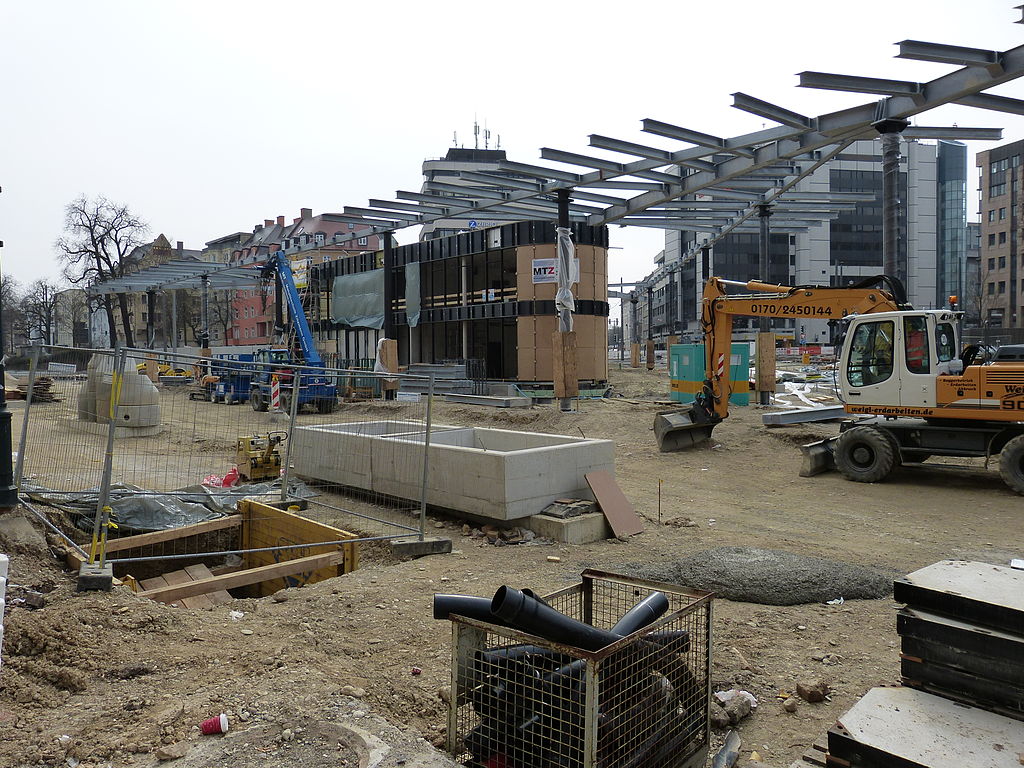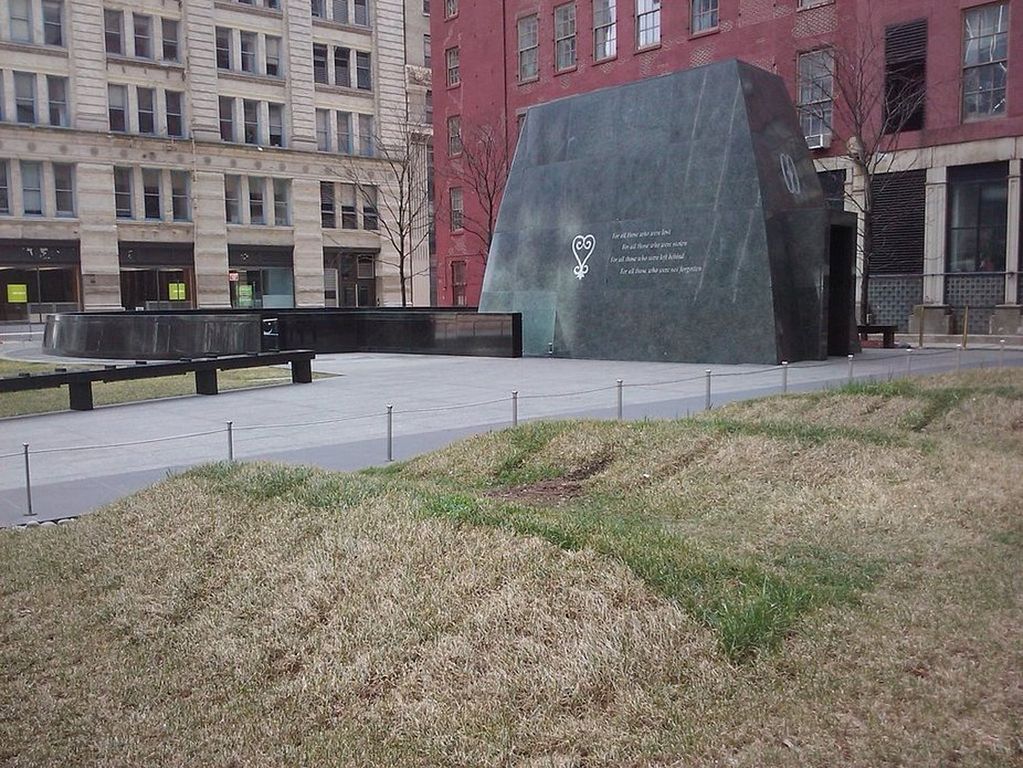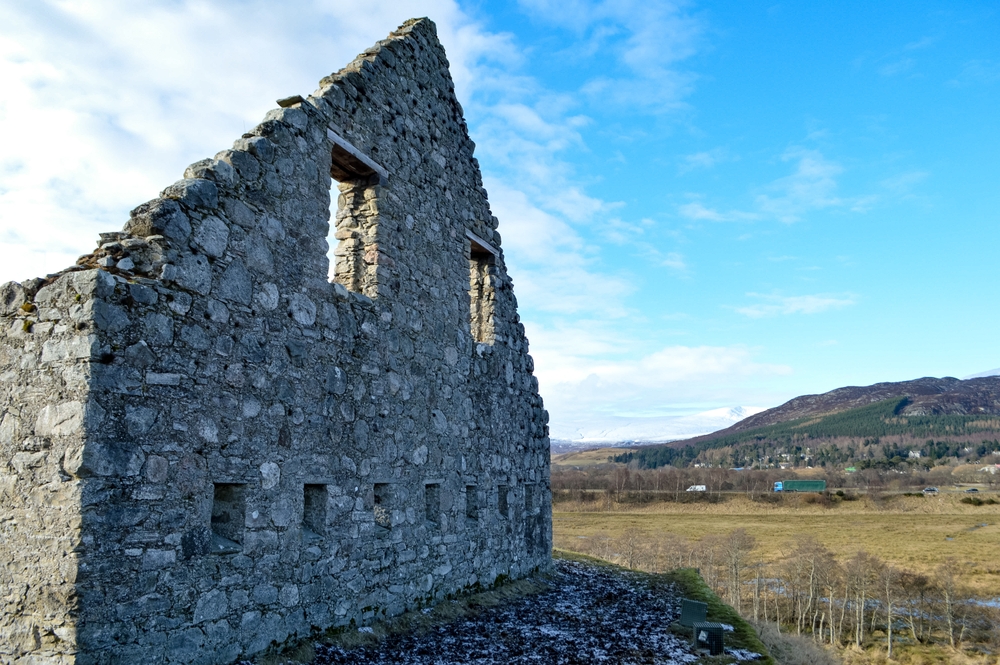What Came Before Us?
It's fascinating to think that historical artifacts are potentially buried beneath our feet. These construction sites led to the discovery of wild objects and remains that shed light on who came before us.

A 700-Year-Old Mummy From The Ming Dynasty
In 2011, the city of Taizhou became the home of a fascinating historical find. Construction workers had been working to expand a street when they found a 700-year-old mummy—a woman from the Ming dynasty.
 Sheenyao, CC BY-SA 3.0, Wikimedia Commons
Sheenyao, CC BY-SA 3.0, Wikimedia Commons
A 700-Year-Old Mummy From The Ming Dynasty
Though languishing only two meters beneath the street, the woman was incredibly preserved. Chinese archaeologists from the Museum of Taizhou couldn't believe their eyes.
 猫猫的日记本, CC BY-SA 4.0, Wikimedia Commons
猫猫的日记本, CC BY-SA 4.0, Wikimedia Commons
A 700-Year-Old Mummy From The Ming Dynasty
The woman's body was in excellent condition, so much so that even her delicate features, such as her skin and eyelashes, had barely deteriorated over time. Inside her coffin, she'd been lying in a brown liquid. However, she wasn't the first mummy to be found.
 Rowingbohe, CC BY-SA 4.0, Wikimedia Commons
Rowingbohe, CC BY-SA 4.0, Wikimedia Commons
A 700-Year-Old Mummy From The Ming Dynasty
From 1979 to 2008, five other mummies had been discovered in the region.
These jaw-dropping finds gave experts greater insight into the Ming dynasty's traditions, including their funerary customs and mummifying techniques.
A 700-Year-Old Mummy From The Ming Dynasty
According to Taizho's museum director, the mummy wore silk garments, which was a very difficult cloth to preserve. This likely meant that the woman had come from a high rank, and had been preserved in a specific way based on her status.
 猫猫的日记本, CC BY-SA 3.0, Wikimedia Commons
猫猫的日记本, CC BY-SA 3.0, Wikimedia Commons
Whale Fin Bones
In Edinburgh, Scotland, there was a construction site working on the light rail system in Leith. Here, workers came across some strange bones.
Whale Fin Bones
After being inspected by experts from the National Museum of Scotland, the truth came out. The bones came from a couple of male sperm whales. But where did these fin bones come from?
 Nachosan, CC BY-SA 3.0, Wikimedia Commons
Nachosan, CC BY-SA 3.0, Wikimedia Commons
Whale Fin Bones
According to researchers, these fin bones could potentially be as old as 800 years. One guess was that people had acquired the bones during a whale expedition from a past century. They may have even been trophies.
 Bernard Spragg, Wikimedia Commons
Bernard Spragg, Wikimedia Commons
Whale Fin Bones
John Lawson, an archaeologist from Edinburgh, weighed in on the discovery, saying, "These bones provide a rare glimpse into and also a physical link with Leith's whaling past, one of its lesser-known maritime industries and one which in the 20th century reached as far as the Antarctic".
 RuthAS, CC BY 3.0, Wikimedia Commons
RuthAS, CC BY 3.0, Wikimedia Commons
Whale Fin Bones
There were other artifacts found on the same tramworks site, including a cannonball and a stone wall, but the whale fin bones were undoubtedly the most mysterious discovery of all.
 alljengi, CC BY-SA 2.0, Wikimedia Commons
alljengi, CC BY-SA 2.0, Wikimedia Commons
A Lost Egyptian Temple
In 2019, a construction project in Kom Shakau Village unearthed an ancient Egyptian temple.
They had been working on the sewage drainage when the ruins came to light.
 Roland Unger, CC BY-SA 3.0, Wikimedia Commons
Roland Unger, CC BY-SA 3.0, Wikimedia Commons
A Lost Egyptian Temple
The temple hand once belonged to the fourth pharaoh of Ptolemaic Egypt, Ptolemy IV, who ruled from 221 to 204 BC.
 Carole Raddato, CC BY-SA 2.0, Wikimedia Commons
Carole Raddato, CC BY-SA 2.0, Wikimedia Commons
A Lost Egyptian Temple
In the wake of this exciting discovery, the secretary-general of the Supreme Council of Antiquities shared that construction had ceased.
The temple ruins had become a priority, and there would be an archaeological mission devoted to their recovery.
 Ahmed T Kandiel, CC BY-SA 4.0, Wikimedia Commons
Ahmed T Kandiel, CC BY-SA 4.0, Wikimedia Commons
A Lost Egyptian Temple
The temple itself was no doubt an awe-inspiring find. The floor and walls were made of limestone, and Ptolemy IV's name could be found in multiple engravings.
 Merlin, CC BY-SA 3.0, Wikimedia Commons
Merlin, CC BY-SA 3.0, Wikimedia Commons
A Mayan Ball Court
In Mexico, ancient historical ruins were shockingly discovered during an excavation project for a 2006 housing development. These ruins turned out to be an ancient Mayan ball court.
A Mayan Ball Court
Luckily, archaeologists stepped in to assess this major find, meaning that the construction plans had to change to ensure the preservation of the site.
 Mariordo, CC BY-SA 4.0, Wikimedia Commons
Mariordo, CC BY-SA 4.0, Wikimedia Commons
A Mayan Ball Court
According to researchers from the National Institute of Anthropology and History, the ball court's dimensions are as follows: 82 feet long and 15 feet wide.
 Fernan, CC BY-SA 3.0, Wikimedia Commons
Fernan, CC BY-SA 3.0, Wikimedia Commons
A Mayan Ball Court
Discovered 12 kilometers from Merida, this ball court dates back 2,500 years and was once a major part of Mayan culture, featuring in religious and royal ceremonies.
A Mayan Ball Court
According to the researcher Donato Martin España, 70% of the court was in good condition. Moreover, it brought to light the advanced development of the Mayas of the Merida region.
An Intact Mammoth Tusk
In 2014, a construction site in Seattle became the center for a mammoth historical find... quite literally.
An Intact Mammoth Tusk
AMLI Residential Partners uncovered a mammoth tusk seven feet below their apartment development site—and thankfully contacted the Burke Museum of Natural History and Culture to properly assess it.
 Richard N Horne, CC BY-SA 4.0, Wikimedia Commons
Richard N Horne, CC BY-SA 4.0, Wikimedia Commons
An Intact Mammoth Tusk
Expert paleontologists descended on the site and extracted the massive mammoth tusk, which ended up being over eight feet long. The fossil was likely the largest tusk ever found in this particular region.
 Jmabel, CC BY-SA 3.0, Wikimedia Commons
Jmabel, CC BY-SA 3.0, Wikimedia Commons
An Intact Mammoth Tusk
The paleontologists from the museum also have some stunning estimates regarding the fossil. At the time it was found, they believed it could be anywhere from 16,000 to 60,000 years old.
An Intact Mammoth Tusk
They also explained how important this find was to history: “The tusk presents a rare opportunity for paleontologists and other researchers to understand the paleoenvironmental conditions present in Seattle during the ice age".
 SounderBruce, CC BY-SA 4.0, Wikimedia Commons
SounderBruce, CC BY-SA 4.0, Wikimedia Commons
An Intact Mammoth Tusk
Discovered on private property, the mammoth tusk in the wrong hands could have easily wound up in a private collection. However, AMLI Residential graciously accepted the construction delays and ensured that qualified people handled the tusk properly.
 Joe Mabel, CC BY-SA 4.0, Wikimedia Commons
Joe Mabel, CC BY-SA 4.0, Wikimedia Commons
An Undetonated 4,000-Pound WWII Bomb
The number of explosives dropped during WWII was jaw-dropping. Across Asia and Europe, the Allies dropped 3.24 million tons of bombs, while Indo-China faced seven million tons of bombs. However, an estimated 15 percent of these dangerous explosives didn't go off.
Some of them even disappeared.
 United States Army, Wikimedia Commons
United States Army, Wikimedia Commons
An Undetonated 4,000-Pound WWII Bomb
After the war, many undetonated bombs got lost to time as countries focused on reconstruction.
In modern times, these have been known to be discovered beneath buildings.
An Undetonated 4,000-Pound WWII Bomb
For instance, on December 25, 2016, a construction project in Augsburg, Bavaria unearthed a shocking artifact: a 4,000-pound RAF bomb dating back to WWII.
 Mailtosap, CC BY-SA 4.0, Wikimedia Commons
Mailtosap, CC BY-SA 4.0, Wikimedia Commons
An Undetonated 4,000-Pound WWII Bomb
This dangerous historical artifact meant some serious safety measures had to be put in place—and 54,000 locals evacuated the area.
 Neitram, CC BY-SA 4.0, Wikimedia Commons
Neitram, CC BY-SA 4.0, Wikimedia Commons
An African Burial Ground
In 1991, a soaring federal office tower had been planned for 290 Broadway. However, before they could start building, archaeologists had to conduct a research excavation to comply with the National Historic Preservation Act.
What they unearthed was staggering.
An African Burial Ground
30 feet below Broadway, the survey revealed human remains—and not just one body, but rather, 15,000 bodies. This was a major archaeological find, and would become what is known today as the African Burial Ground.
An African Burial Ground
This burial ground covered six acres. The 15,000 skeletal remains were African Americans—some enslaved and some free—who had resided in New York during the colonial period.
An African Burial Ground
This burial ground existed from the mid-1630s to 1795, and its rediscovery changed how scholars understood enslavement and its role in shaping New York City.
An African Burial Ground
Eventually, all of the human remains were returned to their original resting places.
Today, the African Burial Ground has become a memorial that honors the memory of the African Americans who lived in colonial New York. An interpretive center and research library were also built on the site.
 7mike5000, CC BY-SA 3.0, Wikimedia Commons
7mike5000, CC BY-SA 3.0, Wikimedia Commons
A 121-Year-Old Time Capsule
In 2015, construction workers found a fascinating time capsule that had been stored deep within the Ruthven road bridge in Scotland, close to the Cairngorms.
A 121-Year-Old Time Capsule
The time capsule was a simple metal box, but it contained some real treasures: a newspaper dating back to September 1893, a bottle, and a paper scroll.
A 121-Year-Old Time Capsule
One of the men working for the construction company Morgan Sindall, Robert Ogg, later commented, "It is fascinating to think these items have been sitting in the bridge's structure for 121 years. The changes which have occurred since it was placed there are extraordinary. If you think that the bridge was being used by horses back then, it gives you a sense of the time which has passed".























